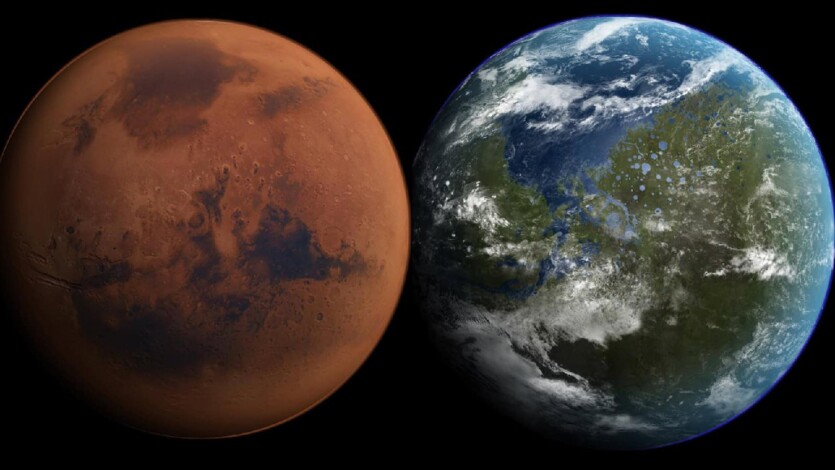
Scientists from Pioneer Research Labs have developed a new study based on the results of a new study plan for terraforming Mars, which, however, is designed for more than one century.
«Thirty years ago, terraforming Mars was not just difficult — it was impossible. But new technologies such as Starship and synthetic biology have now made this a real possibility», — the author of the study says Erika Alden DeBenedictis.
In his scientific article DeBenedictis notes that new advances in the field of climate engineering, synthetic biology and space flight justify the new research program. The average temperature on Mars is about -70°C, and the atmospheric pressure is only 0.6% of Earth’s, which does not allow water to remain on the surface for long.
So, as a first step, the scientist proposes to heat the Red Planet using technologies such as solar sails, artificial aerosols, or silicon aerogels. DeBenedictis emphasizes, that this would heat Mars by at least 30°C. This should also trigger a feedback loop and lead to the release of large amounts of greenhouse gases into the atmosphere.
Currently, the Red Planet receives only 130 watts of solar energy per square meter, much less than the Earth. However, the thin atmosphere of Mars suggests that even small changes in temperature can completely change the planet’s climate.
In the second stage, it is proposed to send genetically modified organisms to Mars, adaptable to life in extreme conditions. Some of them will even be able to use perchlorate salts common on Mars as a source of metabolic energy. Scientists expect these microorganisms to help create biological colonies by forming organic matter, releasing oxygen, and changing the chemical composition on the planet’s surface.
The third stage involves creating a stable biosphere with oxygen-rich air. The goal is an atmosphere with an oxygen content of 0.1 bar – enough to sustain human life without spacesuits.
And although the process of terraforming Mars may take more than a century, the authors of the study call for starting to do so now. Scientists emphasize that it is possible to start preparing and implementing less ambitious projects now.
«Future missions to the surface of Mars in 2028 or 2031 should include small-scale experiments to reduce the risks of terraforming strategies, such as warming local regions», — emphasizes Erica Alden DeBenedictis.
Technically, such training also includes modeling climate feedbacks, designing new materials that support life, and developing hardy microorganisms in Martian chambers on Earth. In addition, scientists are calling for thorough laboratory studies of theerosives and solar reflectors.
To summarize, the authors of the article note that the future of Mars will depend not only on rockets and extreme microbes, but also on humanity’s willingness to learn and master new conditions.
«We don’t even know what is possible from a physical or biological point of view. … If humans can learn to terraform a world like Mars, this could be the first step toward more distant goals», — the researchers emphasize.
https://itc.ua/en/news/huge-ocean-beneath-mars-surface-scientists-find-signs-of-water-storage-that-could-flood-the-planet/
The results of the study are published in the journal Nature
Source: ZMEScience

Spelling error report
The following text will be sent to our editors: